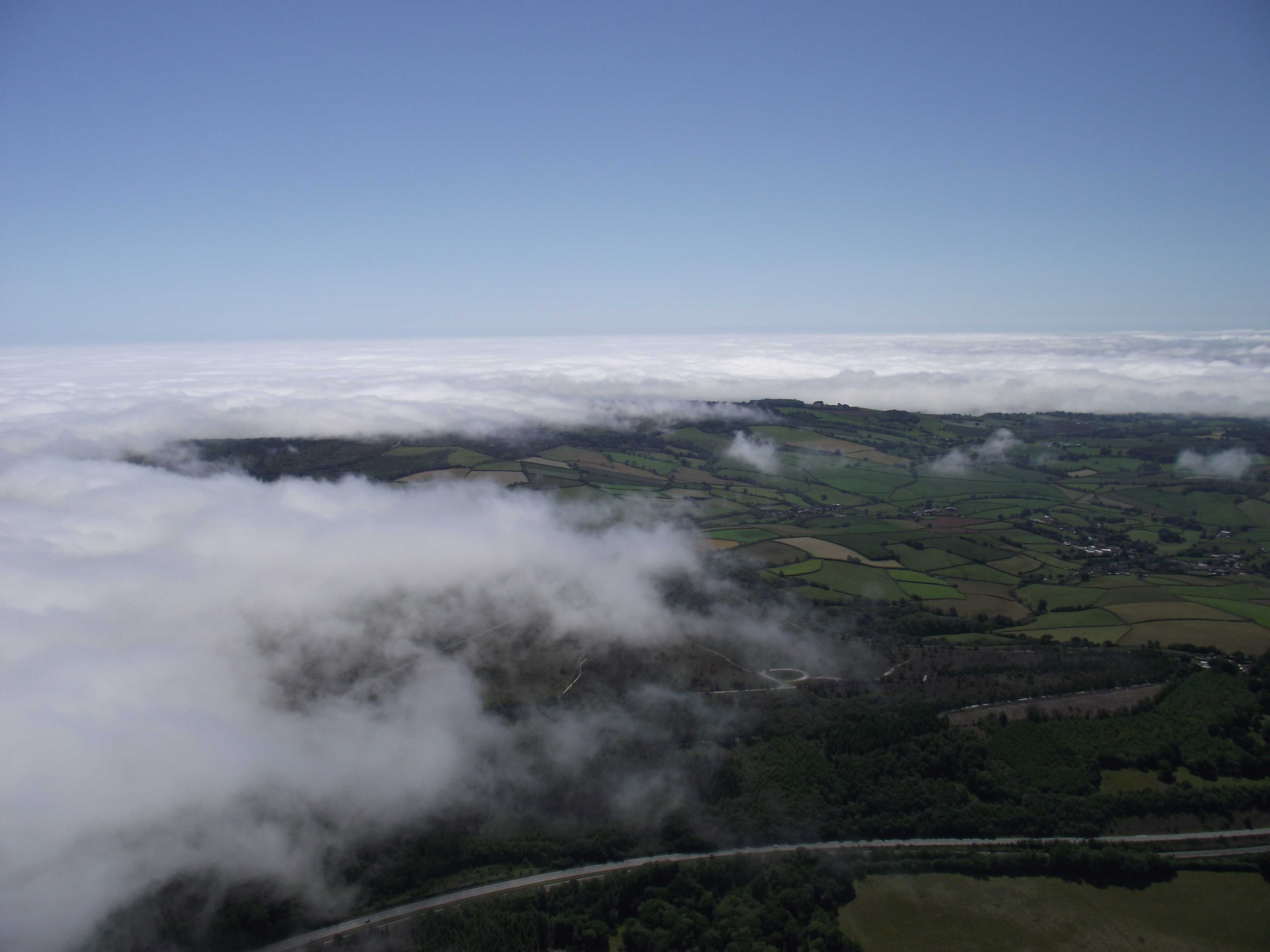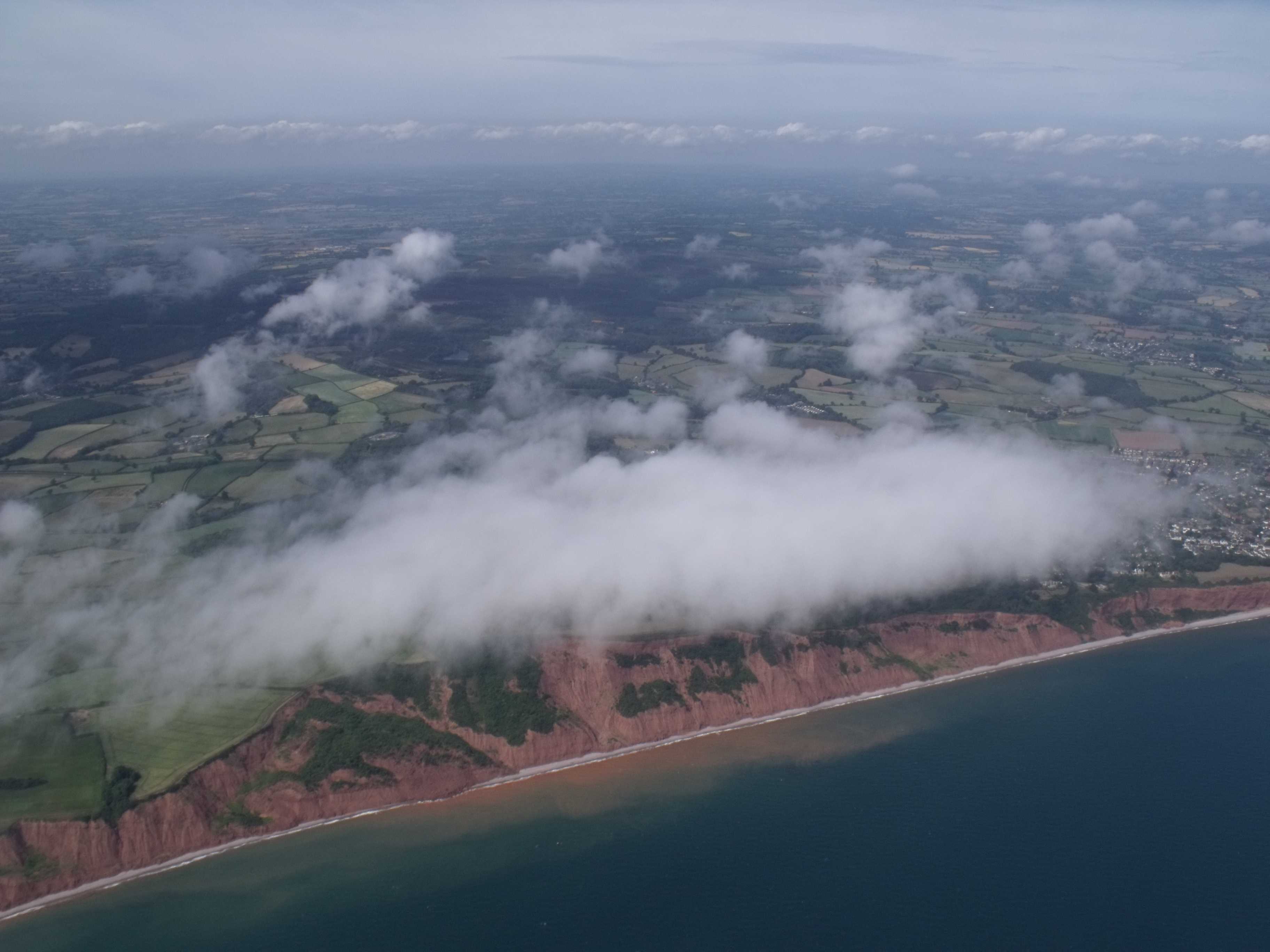Stratus
(Section 2.5.2.8)Stratus usually occurs between the Earth’s surface and 2 km (6 500 ft). Its thickness ranges between tens and several hundreds of metres (tens and several hundreds of feet).
Below the cloud. Viewed from below, a Stratus layer or patch is generally grey, and at times shows variation in luminance. Its base may be clearly defined, diffuse or ragged. When the Sun is visible through Stratus, its outline is not blurred (there is no viewing through ground glass effect).
Within the cloud. Stratus is composed of small water droplets and sometimes of ice crystals. Drizzle droplets, ice crystals and snow grains may also be present. The denseness of the cloud gradually increases towards the top where the high concentration of very fine water droplets may reduce visibility almost to zero. Variations in denseness and visibility are also observed in the horizontal direction. Light to moderate icing may occur, and turbulence is light to moderate.
Above the cloud. Viewed from above, the upper surface generally shows undulations (usually of short wavelengths) and may display projections. In strong winds, the undulations are more pronounced, and bulges and depressions that reflect the irregularities of the ground may be observed (compare to Stratocumulus). Often, the air immediately above the upper surface is hazy. A glory, fog bow and subsun (undersun) may be observed, sometimes simultaneously.





